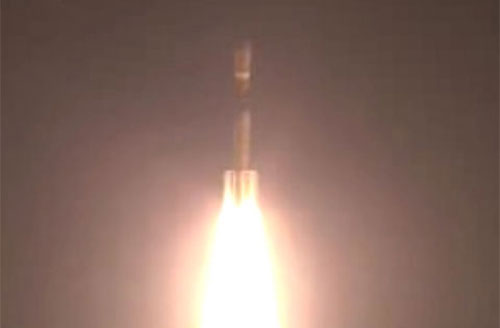By 2020, Vietnam will produce satellites
The National Satellite Center said that by 2020 the LOTUSat-2 radar sensor satellite will be assembled and used by Vietnam on a commercial scale.
According to the satellite development roadmap "made in Vietnam" , after successfully launching PicoDragon (1kg) satellite, Vietnam will continue to launch the NanoDragon (10kg) satellite in 2016. Two years later, MicroDragon (50kg) ) will enter the universe and then LOTUSat-2 (500kg) in 2020.
"LOTUSat-2 is the first satellite produced in Vietnam and will be officially commercialized, ie satellite images can be sold to countries around the world," said Pham Anh Tuan, Center Director. National satellite (VNSC) speaks at the Seminar "Overview of satellite technology and application" held on September 10.

Pico Dragon satellite launched successfully on August 4, 2013 is a preparation step towards the goal of researching and developing Vietnam's own satellite.(Photo: JAXA)
According to Tuan, if the roadmap is completed, by 2010, Vietnam will belong to the group of leading countries in this area, equivalent to Indonesia and Malaysia. Currently countries such as Thailand, Laos . have not yet launched any satellites into space. The Philippines only needs to buy foreign images and does not need to manufacture satellites; Singapore mainly goes commercially, not applications.
Dr. Vu Anh Tuan, Deputy Director of VNSC, said that remote sensing satellites in Vietnam mainly apply in areas for natural resource management, environment, climate change, disaster prevention and mitigation. . The system will ensure earth observation in the event of an emergency disaster with all weather conditions; building and processing satellite data for early supervision and warning of natural disasters and environmental disasters.
According to experts, if you want to take a photo of a certain area, you must order, then at least two days to receive it. If Vietnam has a satellite, everything will be completed in just 6 to 12 hours.
Last year, the micro-satellite Pico Dragon entered the space on August 4 on the HTV4 transport ship from Yoshinobu launch pad at Japan's Tanegashima Space Center. Satellites are built with the aim of training research staff, gradually approaching the process of designing, manufacturing, integrating, and testing satellites. It has been operating in orbit for more than three months (from November 19, 2013 to March 1), and successfully communicated with VNSC's ground stations and many countries around the world.
The name has been changed.
- Vietnam will produce satellites in 2022
- Vietnam satellite will enter space in 2018
- Vietnam produces satellites that observe Earth to forecast natural disasters
- Vietnam's satellites are in the universe
- Vietnam is about to build a nearly 600kg satellite
- The F-1 satellite has not yet signaled
- Successfully launched the micro-satellite of Vietnam
- Vietnam is about to build radar satellites
- By 2020, Vietnam will launch 3 more satellites into space
- Vietnam satellite is about to leave the space station
- Japan is about to launch a micro-satellite of Vietnam
- Vietnam launched Micro Dragon satellite at the end of 2018
 Van Allen's belt and evidence that the Apollo 11 mission to the Moon was myth
Van Allen's belt and evidence that the Apollo 11 mission to the Moon was myth The levels of civilization in the universe (Kardashev scale)
The levels of civilization in the universe (Kardashev scale) Today Mars, the sun and the Earth are aligned
Today Mars, the sun and the Earth are aligned The Amazon owner announced a secret plan to build a space base for thousands of people
The Amazon owner announced a secret plan to build a space base for thousands of people